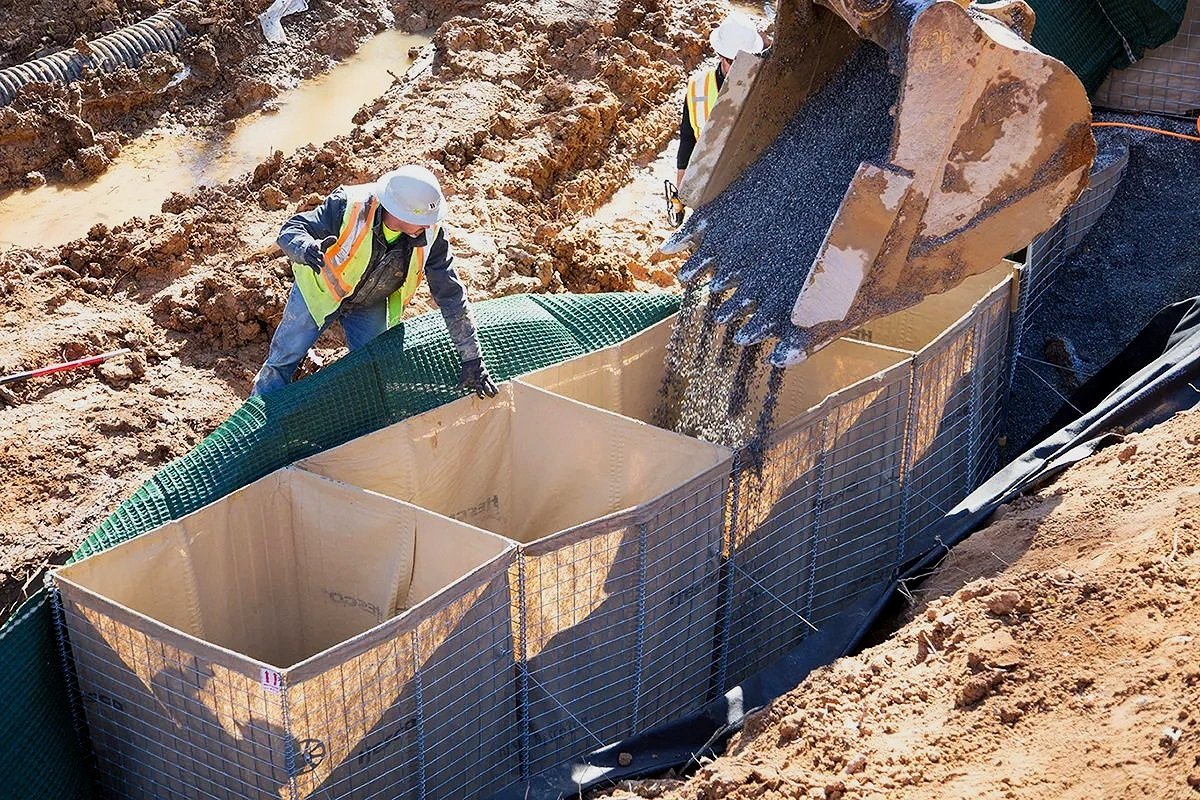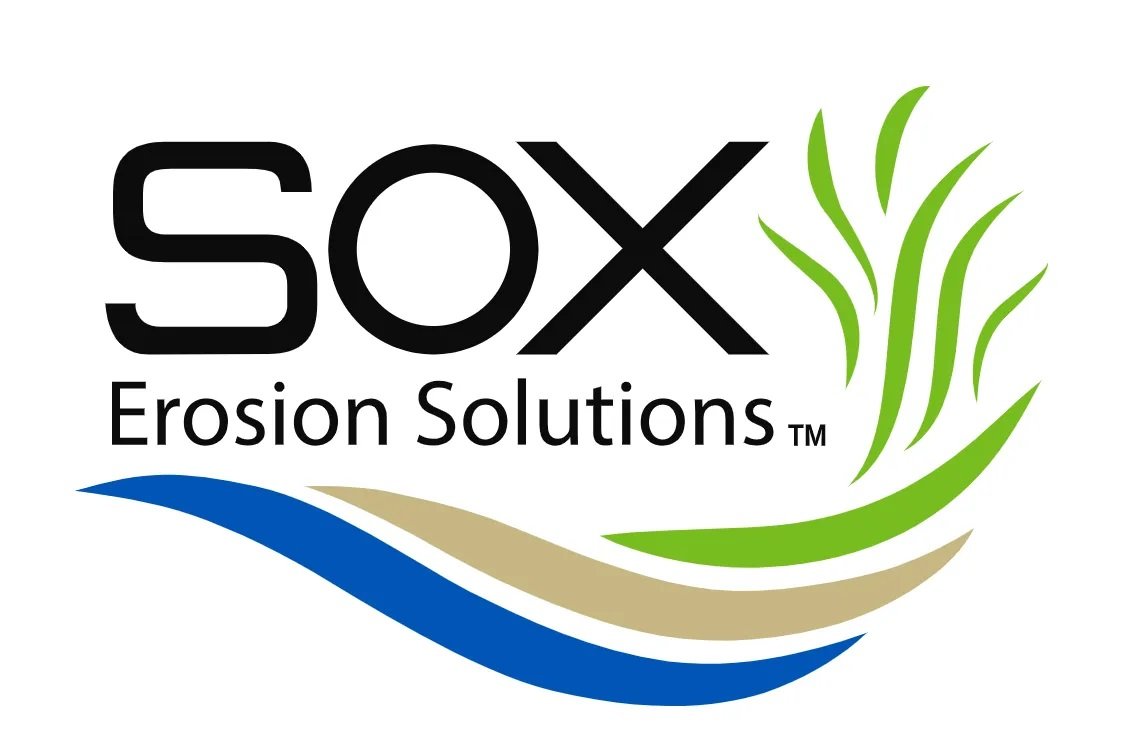Brands We Trust

SOX Erosion Solutions
SOX Erosion Solutions’ bioengineered materials are some of the best erosion control systems for embankments, berms, and hillsides. Assisting in areas like sediment control, slowing water encroachment, vegetation support, and overall reduction in soil erosion, there is no better product for the same application.

Flexamat
Flexamat is a type of soil erosion control system that is designed to stabilize slopes, channel banks, and other areas prone to erosion. It consists of a flexible, interlocking matrix made of recycled plastic that is filled with soil and vegetation. Flexamat offers a number of benefits, including increased resistance to erosion, improved soil stability, environmental/wildlife friendliness, and the ability to create stable slopes without the need for heavy machinery.

Scourlok
ScourLok is a geotextile material that is placed over the soil surface to provide a protective layer and help prevent scour. It is designed to be flexible, yet durable, to withstand the force of moving water and protect the soil from erosion. ScourLok is also designed to promote vegetation growth, which can provide additional benefits on top on its extreme resistance to hydraulic and non-hydraulic stress.

ARMORMAX by Propex
ARMORMAX Erosion Control is a multi-layer, hybrid composite material that provides superior impact resistance and protection against environmental degradation. It is designed to protect soil from wind and water erosion, allowing vegetation to establish and anchor the soil in place. The material is durable and flexible, making it an ideal solution for a wide range of erosion control applications, including slope stabilization, river banks, and coastal regions.
The Products We Use
At Black Fox Services, the most integral aspect of our process comes in understanding the unique needs of each project. We take the time to assess the site conditions, including factors such as soil type, slope, and precipitation patterns, in order to determine the most appropriate solutions for controlling erosion and stormwater management. Provided our extensive experience in these areas, we have selected a variety of products from popular brands which reflect our ideals in both quality and efficiency. See the sections below to learn more about the products we use, and what they can offer your upcoming project!
Gabions
Gabions are cages, baskets, or boxes filled with rocks, stones, or concrete used in construction and civil engineering projects. They are designed to provide retaining walls, stabilize slopes, and control erosion. Gabions are made from a mesh of wire, typically galvanized steel, and are usually filled with locally available materials, making them an eco-friendly and cost-effective option for many applications. They can also be used in river and coastal management projects to protect against wave action and erosion. Gabions are durable, flexible, and able to withstand extreme weather conditions, making them a popular choice for retaining walls, slope stabilization, and erosion control. They provide a natural aesthetic, blending well with their surroundings, and are often used in landscaping and architecture projects. Gabions offer a unique and functional solution to many construction challenges, making them an important tool in the construction industry.
Geotextiles
Geotextiles are permeable fabric materials used in construction and civil engineering projects. They are designed to separate, filter, reinforce, protect, or drain soils and other granular materials. Geotextiles are made from synthetic fibers such as polyester, polypropylene, or nylon and can have different characteristics based on the type of application. Some geotextiles are designed to have high tensile strength for soil reinforcement, while others are designed to have high water permeability for drainage. They are commonly used in applications such as road construction, retaining walls, erosion control, and landfill lining. Due to their versatility and durability, geotextiles have become a popular choice in modern construction projects and have significantly improved the quality of infrastructure built in many parts of the world.
Erosion Control Matting (ECM)
Erosion control matting (ECM) is a type of permeable, biodegradable matting used in civil engineering and construction projects to control soil erosion and stabilize slopes. ECM is designed to protect soil from wind and water erosion, allowing vegetation to establish and anchor the soil in place. The matting is typically made from biodegradable materials such as coconut fiber, wood fiber, or straw and is held in place by stakes or mesh netting. ECM is commonly used in the construction of slopes, embankments, and in areas prone to erosion, such as river banks and coastal regions. It provides a cost-effective and eco-friendly solution for erosion control and slope stabilization, and is an important tool in maintaining the health and stability of the environment and the quality of infrastructure built in many parts of the world.
Geomembranes
Geomembranes are impermeable barrier materials used in civil engineering and construction projects to control fluid and gas migration. They are designed to prevent the loss of liquids or gases and protect the environment from contamination. Geomembranes are made from a variety of materials including high-density polyethylene (HDPE), linear low-density polyethylene (LLDPE), and chlorinated polyethylene (CPE), each with unique physical and mechanical properties that make them suitable for different applications. They are commonly used in landfills, waste containment, and water management projects as well as in the construction of ponds, lakes, and canals. Geomembranes are durable, flexible, and resistant to puncture, making them a popular choice for containment and water management applications. They provide a cost-effective and environmentally friendly solution to fluid and gas migration control, improving the quality of infrastructure built in many parts of the world.
Geogrids
Geogrids are sheets of polymer material with a network of interlocking nodes or ribs used in civil engineering and construction projects. They are designed to reinforce soil, retain wall systems, and provide stability to slopes. Geogrids work by distributing loads and stresses evenly, thus reducing the pressure on the soil and improving its bearing capacity. They are made from a variety of materials including polyester, polypropylene, and high-density polyethylene, each with unique physical and mechanical properties that make them suitable for different applications. Geogrids are commonly used in the construction of roads, retaining walls, slopes, and other infrastructure projects where soil reinforcement is required. They provide a cost-effective solution to soil stabilization, retaining wall systems, and slope protection, and have significantly improved the longevity and quality of many infrastructure projects around the world.









